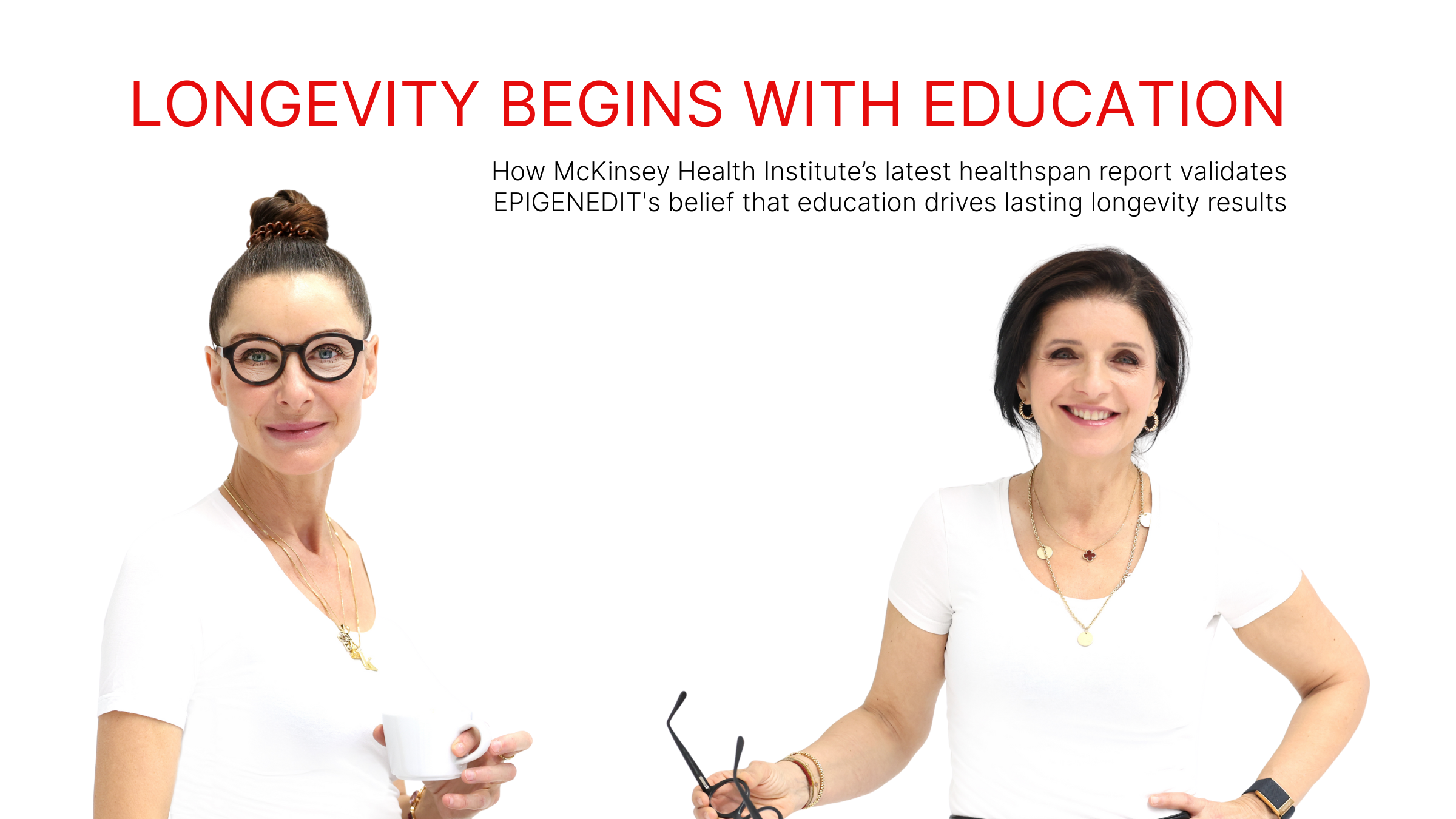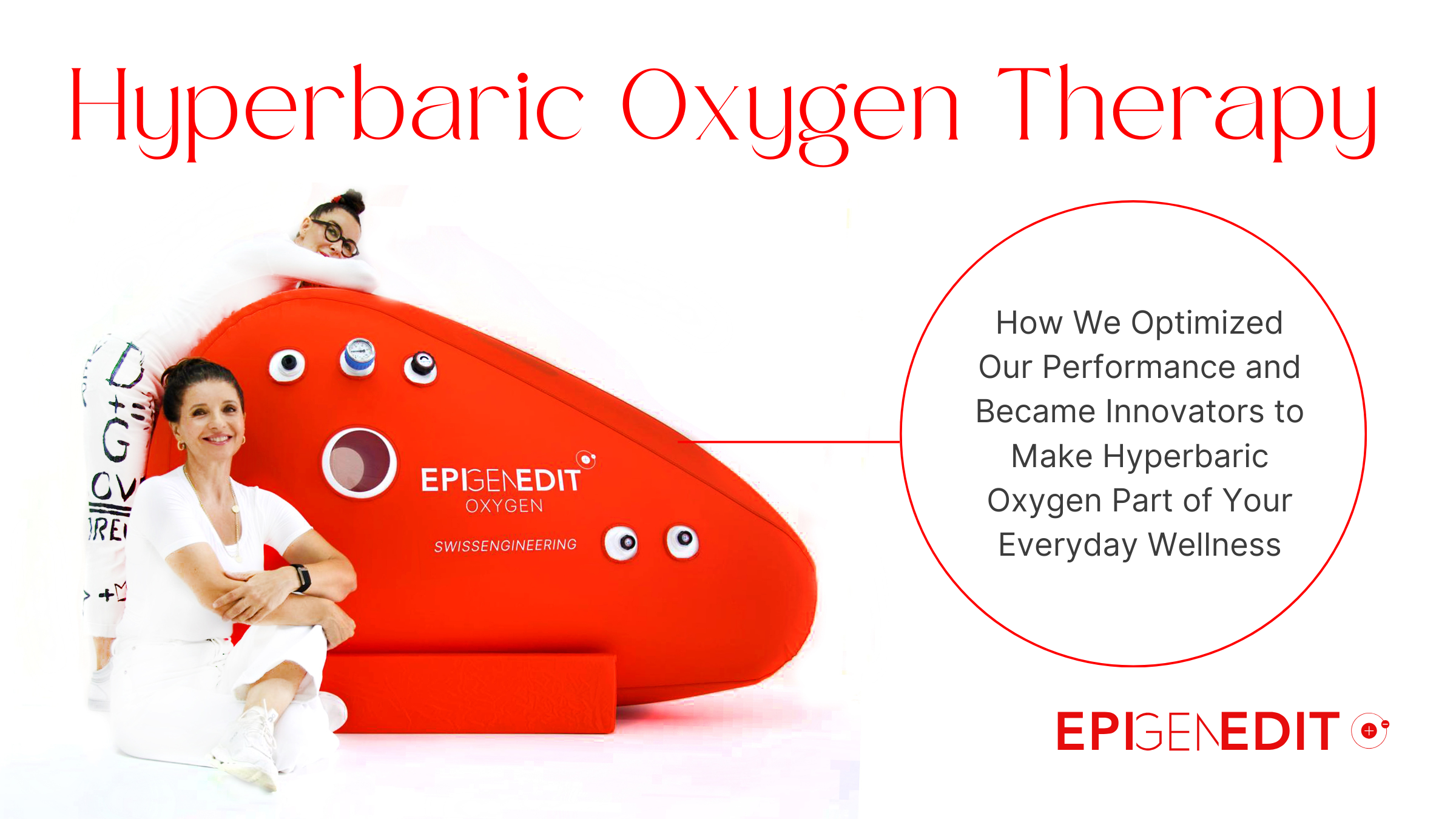McKinsey Health Institute has just published a new report, “Healthspan science may enable healthier lives for all”. It immediately resonated with us because it addresses what we’ve observed in our own practice: the most successful longevity journeys aren’t just about applying interventions. They’re about education and understanding the science behind them.
The report emphasises that “evidence-based practice and talent” development is essential for advancing the healthspan field, noting that “stakeholders can help develop practitioner talent globally, including healthspan-oriented clinicians and researchers.”
This mirrors exactly what we’ve discovered at EpigenEdit. When our patients understand the biological mechanisms behind our protocols, they don’t just follow them, they embrace them with the consistency needed for genuine transformation.
Practitioner and Patient Need to Collaborate
The field of healthspan science needs more than just advanced treatments. It needs educated practitioners and informed patients. The report specifically calls for “Evidence-based practice and talent” as one of seven critical shifts needed to advance the field, emphasising the importance of “developing practitioner talent globally.”
This educational imperative extends beyond medical professionals. As the report notes, Millennials and Gen Z are driving demand for science-backed wellness solutions, moving away from quick fixes toward understanding the biological foundations of healthy ageing.
The 14 Consensus Biomarkers: A Teaching Framework
McKinsey’s report references fourteen biological processes that contribute most to ageing, what researchers call the “hallmarks of ageing.” These biomarkers represent the foundation for teaching the science of longevity:
- Genomic instability. Accumulation of DNA damage and the loss of ability to repair damage
- Telomere attrition. Telomere shortening with each cell division cycle, compromising genomic integrity
- Epigenetic alterations. Changes to how genes are expressed over time, triggered by environmental influences
- Loss of proteostasis. Reduced regulation, causing reduced cell viability and misfolded proteins
- Disabled macroautophagy. Decline in cellular ability to deliver damaged organelles and proteins for degradation
- Stem cell exhaustion. Decline in tissue renewal as well as impaired tissue repair upon injury
- Altered intercellular communication. Loss, misinterpretation, or ignoring of the signaling between cells, interrupting normal tissue function and repair
- Chronic inflammation. Increase in inflammatory cytokines and biomarkers with immune decline
- Dysbiosis. Disruption in gut bacterial composition, distribution, and activities
- Extracellular matrix (ECM) changes. Deposition, degradation, and modification of ECM components
- Deregulated nutrient sensing. Cellular inability to sense what nutrients are at hand and communicate with other systems
- Mitochondrial dysfunction. Functional deterioration, causing an increase in reactive oxygen species
- Cellular senescence. Cessation of cell division while metabolically still active, damaging other healthy tissues.
- Psychosocial isolation. Enfeeblement of social and affective bonds, as well as their psychological or psychiatric consequences
Education: The Missing Element in Longevity
McKinsey’s analysis reveals that successful healthspan interventions require what they term “fundamental understanding of ageing biology.” The report emphasises that “stakeholders can orchestrate a global research agenda that focuses on areas with the most potential and determines how to accelerate them.”
At EpigenEdit, we’ve discovered that patients who understand these biomarkers become active participants in their longevity journey rather than passive recipients of treatment. When someone understands how hyperbaric oxygen therapy influences mitochondrial function and stem cell production, or how lifestyle choices impact cellular senescence, they make different daily decisions.
EpigenEdit Protocols for Teaching Longevity
Daily: Choose one biomarker to focus on and explain to someone else. Teaching reinforces understanding and connects science to daily choices.
Weekly: Study how your current protocols target multiple biomarkers simultaneously. Understanding these connections transforms compliance into commitment.
Monthly: Review your biological age markers and connect improvements to specific interventions. This creates a feedback loop between knowledge and results.
Final Thoughts
” When someone grasps how their daily choices can influence their healthspan, they transform from a patient following protocols to a partner in their own longevity journey.”
—Katrin Dreissigacker and Danijela Schenker
The choices you make today can start rewriting your future tomorrow. But first, you need to understand the science behind those choices. Are you ready to become a student of your own longevity?



